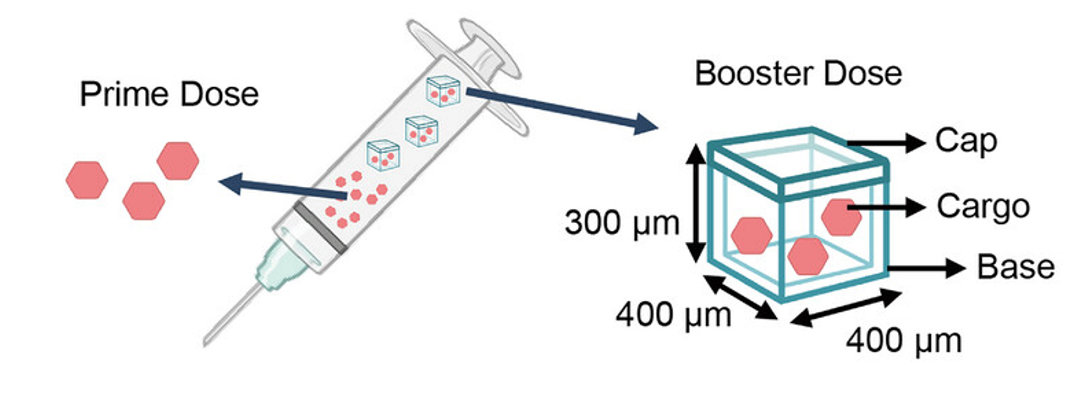The future of immunizations could include “self-boosting” vaccines if an exciting new study from the Massachusetts Institute of Technology (MIT) is anything to go by. The team is developing microparticles that slowly break down to release doses of vaccine on a timed schedule – theoretically, that means getting all the doses of a vaccine in just one shot.
Lots of vaccines need multiple doses to reach their peak of effectiveness. For the MMR, against measles, mumps, and rubella, it’s two doses, usually given when a child is around 1 and then around 3 years old. For polio, the recommendation in the US is that kids get four doses, at 2 months, 4 months, 6-18 months, and 4-6 years of age.
If you live in a place with consistent access to healthcare facilities, scheduling all these vaccine appointments is at worst an inconvenience. But for people in rural, hard-to-reach communities, or areas without solid health infrastructure, this poses a potentially lethal problem.
An estimated 1.5 million child deaths are caused by vaccine-preventable illnesses each year, and one in five children lack access to vaccines. Finding ways to maximize the impact of vaccines and eliminate the need for boosters could make a substantial dent in these statistics.
“The long-term goal of this work is to develop vaccines that make immunization more accessible – especially for children living in areas where it’s difficult to reach health care facilities,” said study author Ana Jaklenec in a statement. “This includes rural regions of the United States as well as parts of the developing world where infrastructure and medical clinics are limited.”
To that end, Jaklenec and colleague Robert Langer have been leading research into a new type of vaccine delivery system – polymer microparticles that can carry a vaccine dose as their payload and break down slowly within the body, delivering their booster dose several weeks after the initial one.
They’ve already demonstrated that their theory works by testing a polymer microparticle vaccine for polio, which releases a booster dose 25 days after the initial dose. But there was a snag – the polymer they used releases acids as it breaks down, risking damage to the vaccine contained within the particles.
For this study – led by recent PhD graduate Linzixuan (Rhoda) Zhang – they decided to focus on different polymers called polyanhydrides. These are already in use in some medical products, and there’s been a lot of research devoted to understanding how they behave. Importantly, they don’t have this same issue with acid release.
The team constructed and tested 23 different polymers with different chemical structures. They had to be stable at up to 40°C (104°F), slightly above body temperature, and withstand the process of constructing the sealed microparticles that can hold a vaccine dose.

The initial vaccine will contain both the prime dose of the vaccine, plus booster doses contained within microparticles. Over time, the microparticles break down to release the booster dose several weeks later.
The vaccine chosen for testing was for diphtheria, with the aim that the booster dose would be released two weeks after injection. In mice immunized with the microparticle vaccine, comparable levels of antibodies were detected after one month as in mice that received two traditional shots, two weeks apart.
“If we want to extend this to longer time points, let’s say over a month or even further, we definitely have some ways to do this, such as increasing the molecular weight or the hydrophobicity of the polymer,” said Zhang.
That opens up the prospect of using this technology for childhood vaccines that are scheduled several years apart, but the team are also keen to explore the possibilities for other medical treatments and drugs that are given as scheduled doses.
More work is needed before we’ll be able to see this kind of approach in humans, but the authors are optimistic about its potential, which they describe in the paper as “a practical and scalable solution for enhancing immunization coverage worldwide.”
The study is published in the journal Advanced Materials.
Source Link: “Self-Boosting” Vaccines Trap Doses In Microparticles For Later Release Inside The Body